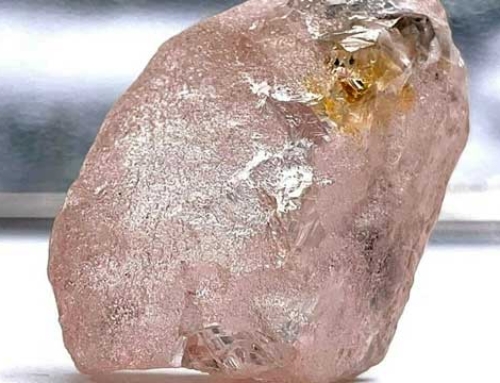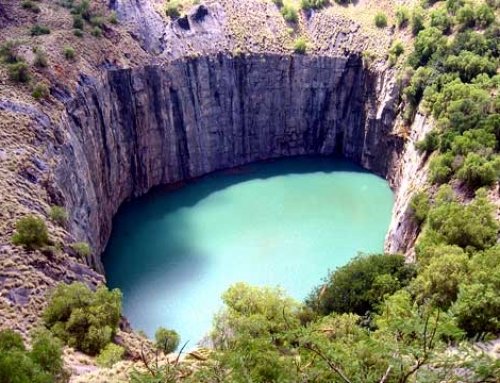image: Argyle – Rio Tinto
This Rio Tinto Argyle tender consists of 64 diamonds with a total weight of 56.28 carats.
The tender, titled “The Quest for the Absolute” has six hero diamonds, including
- the Argyle Enigma – a 1.75-karat modified radiant fancy red diamond
- the Argyle Amari – a 1.48-carat, purple-pink diamond in the shape of a heart
- the Argyle Elysian – a 1.20 carat modified cushion shaped fancy vivid pink diamond
- the Argyle Verity™ – a 1.37-karat oval shaped fancy vivid purplish pink diamond
- the Argyle Opus – a 2.01-karat round fancy intense pink diamond
- the Argyle Avenoir – a 1.07-carat oval shaped fancy red diamond
Arnaud Soirat Rio Tinto Copper & Diamonds CEO commented: “Rio Tinto’s Argyle mine is the first and only sustained source of rare pink diamonds in history. With the life cycle of this extraordinary mine approaching its end, we have seen, and still see, an unstoppable demand for these diamonds with a truly limited edition and a strong value appreciation“.
About the Argyle mine of Rio Tinto
Rio Tinto owns and operates the Argyle diamond mine in the remote region of East Kimberley in Western Australia. The mine has been operating since 1983 and has produced more than 800 million carats of rough diamonds. The mine is one of the world’s largest supplier of diamonds and the world’s largest supplier of naturally coloured diamonds.
The search for diamonds in a remote and underdeveloped region of Western Australia in the early 1970s was a bold and challenging undertaking that would bring a number of surprises and effectively rewrite the geological archives.
When Ewen Tyler studied geology at the University of Western Australia in the 1940s, kimberlite was the only known host rock for diamonds. However, Tyler was intrigued by the observations of his geology professor, Rex Prider, that Lampolitic minerals found in the Kimberley region of Western Australia were very similar to those found when diamonds were discovered in South Africa.
Returning to Australia in the late 1960s, after a decade of mining exploration in Africa and Europe, Tyler was eager to test the theory of Prider’s that lambproite could also be a host rock for diamonds. He formed the Kalamburu Joint Venture to start commercial exploration for diamonds in the Kimberley.
The research began in 1972, with the team’s geologists being charged with the enormous task of sampling sediments from all creeks and rivers in the Kimberley – a vast and isolated area roughly the size of the British Isles. It was hoped that if there had been an exposed diamond pipe, it would have been traversed by creeks or rivers during the distinctly wet season of the area and that at least some of the indicator minerals would have been flushed downstream.
In early 1974, indicator minerals and diamonds had been found in samples from the north, east and west of Kimberley and the joint venture group decided that it needed more resources to intensify exploration. A timely meeting with John Collier, who was head of exploration for CRA Ltd. (later Rio Tinto Ltd.) helped to ensure CRA participation in the project under the new name of Ashton Joint Venture. Collier, who had had great success in opening up CRA’s massive Hamersley iron ore project in Western Australia, was a key champion of the diamond project and ensured that the best materials and resources were made available to pursue the search seriously.
For the search clear goals were set: first, to find a diamond larger than a quarter of a carat; second, to find a diamond-bearing pipe; and third, to establish that the pipe was of a diamond quality that was high enough to justify a mine.
The first goal was achieved in July 1976 when a diamond over a quarter carat was found in the King George River in the north of Kimberley, although the second goal had already been achieved with the intermediate discovery of a diamond-bearing pipe – Big Spring No. 1 – in the remote location of Mt North Creek.
During bulk testing of these and four other pipes in 1977, disappointingly small diamonds were found in the area. However, the sampling did provide important new geological information: in contrast to the South African diamond finds, chromite was revealed as an indicator mineral for diamonds in Australia and lamproite was indeed the host rock for the diamonds. The theory of Rex Prider was finally proven.
While samples from western Kimberley eventually led to the discovery of 49 lamproite pipes and a central purification plant was built to recover some 92,000 diamonds, it was established that the quality of these deposits was not high enough to justify the creation of a mine.
Fortunately, further exploration in the eastern part of the Kimberley was to achieve the third objective of the search. Sampling of Smoke Creek revealed not only the usual indicator minerals for diamonds, but whole diamonds. Indeed, the members of the venture team were surprised to find up to 15 diamonds in their pan when they sieved gravel from certain parts of the creek.
Over the next three years, a deep well was drilled to fully evaluate the pipe and confirm that it was indeed commercially viable. In December 1985 the mining of open mines was started and although the excavated diamonds were of much lower value than the world average, the volumes were enormous and the quality of the diamonds was of a richness that would rewrite the geological textbooks. Argyle would become one of the world’s largest diamond producers and the largest supplier of naturally colored diamonds, including white, champagne, cognac, blue and the coveted rare pink diamonds.







